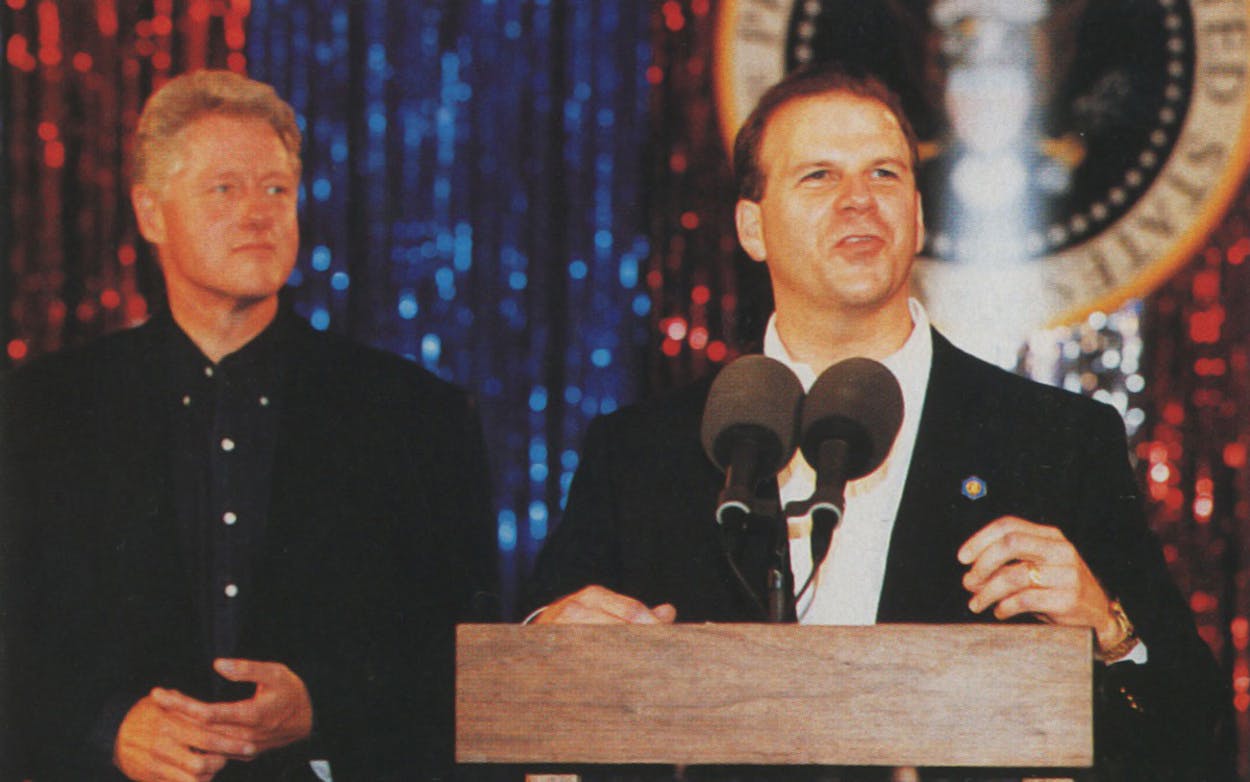Tilman Fertitta came home to Galveston last November to deliver the oratorical equivalent of a belly flop in the punch bowl. Speaking to the city’s business leaders at a chamber of commerce luncheon, the wealthy 39-year-old Houston-based restaurateur mesmerized them with his cut-the-crap rhetoric. “I’ve been to forty-four states in the last few years,” Fertitta said, adding that as a tourist center, Galveston was “definitely lagging behind all the other areas I’ve visited. We don’t have amusement parks. We don’t have golf courses … Our greatest asset is the beach, but it’s also our greatest weakness.” The beachfront motels were shabby; their signs were outdated—including, he noted, that of the Holiday Inn, which was owned by his father, Vic, who happened to be in attendance. The audience tittered nervously, as it did when Fertitta brazenly dismissed the Woodlands resort, owned by Galveston patron saint George Mitchell, as a lesser tourist destination “just sitting up there amongst a bunch of trees in north Houston.”
But the CEO of the $500 million Landry’s Seafood Restaurants chain saved his choicest broadsides for that mightiest of Galveston powers, the $500 million Moody Foundation. Perfectly unbothered that the luncheon was taking place at the Moody Gardens Convention Center, Fertitta belittled the Moody family’s civic spirit. “Remember, the foundation has to give the money away,” he said. Yet the Moodys’ latest project wasn’t a new park, beachfront restoration, or other needed endeavor. Rather, it involved the construction of a three-hundred-room hotel on the grounds of Moody Gardens and was a venture that was “doing nobody any favors,” other than Bobby Moody, whose company, Gal-Tex Hotel Corporation, would profit from managing the hotel. The whole deal reeked of greed—and, for that matter, unfairness, Fertitta insisted. The Moodys’ new “nonprofit” hotel, with its tax exemptions and favorable location at Moody Gardens, would cripple the taxpaying hotels, two of which were Fertitta’s. “We’re sending the wrong message to the rest of the United States,” he warned. “You’re never going to get major developers in here. We’re saying to them, ‘Stay out of Galveston.’”
The audience, as one, gulped. “I will not let the Moody Foundation compete unfairly without a fight,” Fertitta vowed. He was already suing the Moodys and the city over the matter, but he didn’t intend to stop there. Noting that a U.S. House Ways and Means subcommittee would be investigating tax-exempt organizations, Fertitta promised, “I plan to be right in the middle of it.”
The speech was classic Tilman Fertitta, brazen to the point of insolence yet impossible to wave off—and, in the end, rather breathtaking. The audience gave him a standing ovation. Afterward, a chamber member was heard to gush to the speaker, “How do you get your pants on in the morning with those big balls of yours?” Even Fertitta seemed dizzied by his performance. “I’ve never felt so right in all my life,” he told his father later.
It was an altogether new sensation for a surviving warrior of the eighties’ take-the-money-and-run amorality. During that decade, Tilman Fertitta was known more for his nerve and his artful dodging than for his principles. By the dawn of the nineties he would emerge unscathed with an empire as reflective of his day as insurance and energy were of the Moody and Mitchell era. Now he was a full-blown player, Houston’s most dynamic young businessman, a Wall Street darling, and a friend of President Bill Clinton’s. But he was nobody’s hero, nor would he be, until he came home to Galveston as an avenging angel, where he could be not only rich but right.
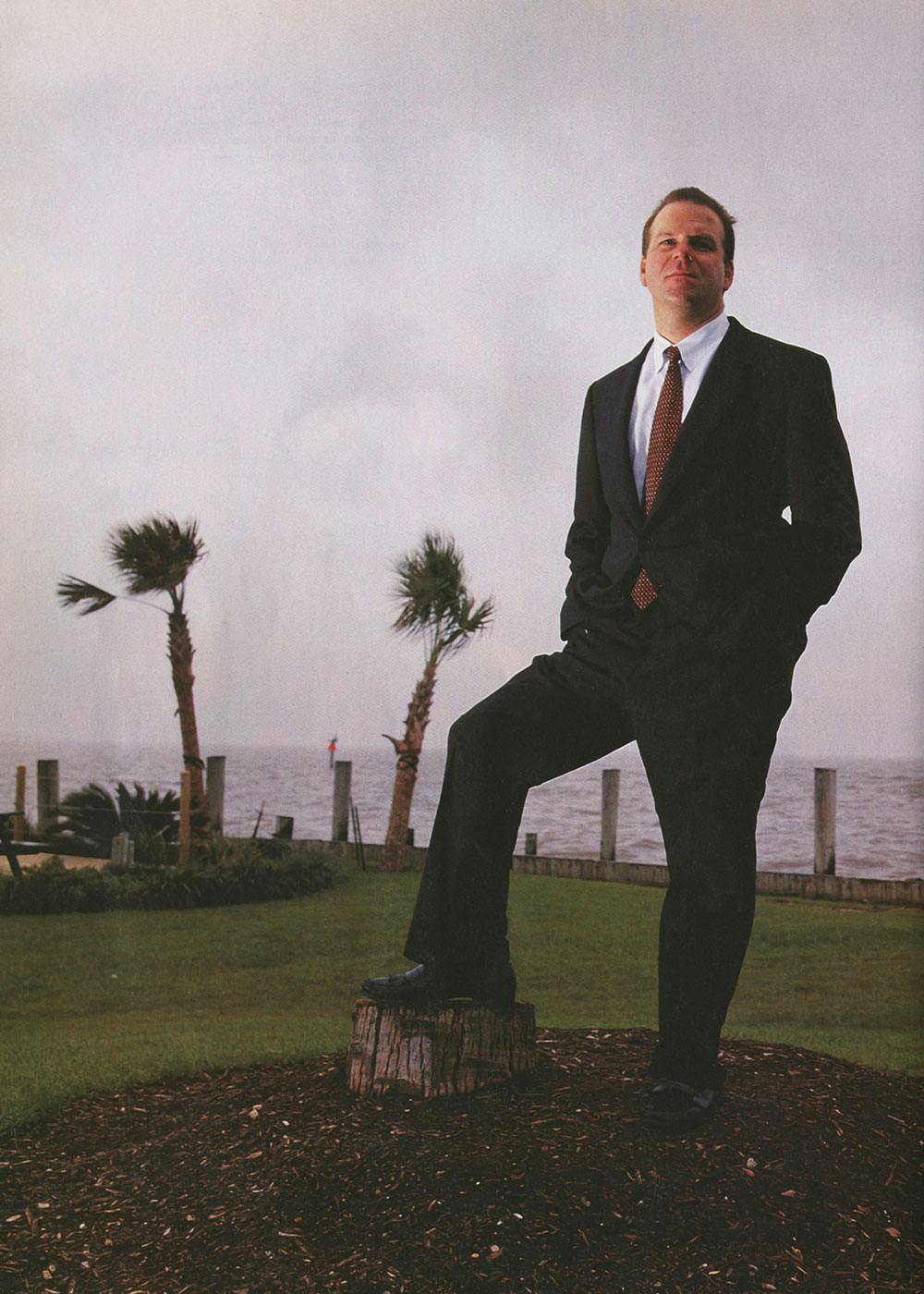
During my ten or so visits with Fertitta, I couldn’t help but notice how the electric braggadocio of his monologues would suddenly give way to some blasé slogan that would seek to remind me that I was in the presence of a good guy. “Do the right thing,” he would interject. And, “It’s nice to be important, but it’s more important to be nice.” Beneath the gruff, predatory exterior lurks a man who very much wants those around him to think the best of him. Of course, since Fertitta built Landry’s into the second-biggest seafood chain in America (after Red Lobster), his life has become cluttered with unctuous suitors who will cut him all manner of slack. Fertitta became identified with the Democratic party not because of his political views, which are generally conservative, but, he says, because “the Democrats embraced me.” Clinton’s party saw in Fertitta not so much a kindred spirit as a clean-cut young family man who wasn’t a personal-injury lawyer. Here was a guy whose image and pocketbook the Democrats could exploit for decades to come. So far, Fertitta hasn’t complained. He has been Clinton’s guest at the White House four times.
If Fertitta, with his guileless patter and asymmetrical grin, were one of his signature restaurant’s marquee signs, it would blare out, “Work In Progress.” He is given to exclaiming in wonderment, “I’m so young.” But this apparent vulnerability is nothing more than a seductive front. For even as he molds himself into Citizen Fertitta, CEO Fertitta remains a shrewd hustler with business instincts that are chillingly acute. Ever since his days as a junior high school kid selling candy and gum to his classmates at a markup, Fertitta has known his calling. “I can’t draw a stick person,” he acknowledges. “I can’t play a musical instrument. But I’ve always had a knack for making money.”
He was never merely a wage earner, though. Even as a fourteen-year-old kid working the floor of his father’s Galveston restaurant, Pier 23, young Tilman could discern what made a business successful. Remembers Vic Fertitta, an affable lug whose voice assumes an almost worshipful tremor when speaking of his middle son: “Tilman would tell me, ‘Daddy, the food is taking too long coming out of the kitchen. It should all come out in eight to twelve minutes.’ One Friday night two waitresses got in a fight. He punched the clock for both of them, fired them, and took over their stations, four tables each. That’s when I knew he was different.”
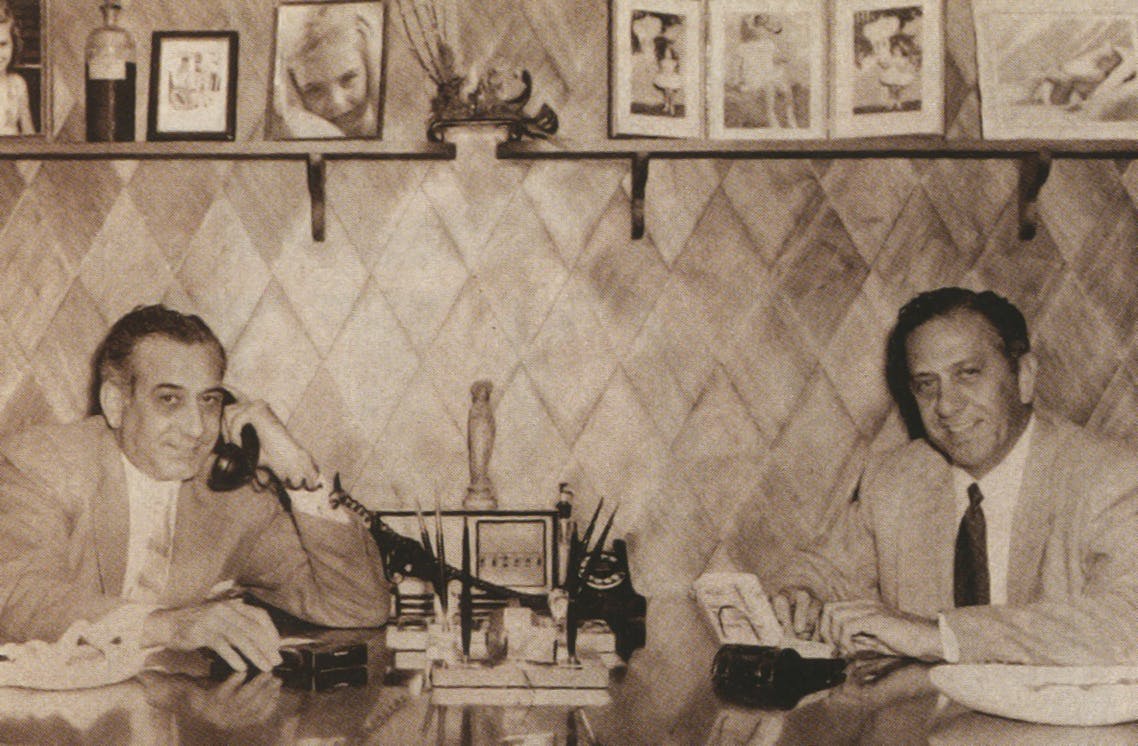
In 1974 the Fertittas relocated to the west Houston suburbs, and Tilman attended Westchester High School, the same one I did. I remember him as a swarthy guy who threw his weight around and didn’t settle for anything second-rate. He drove a Mustang convertible, went after the flashiest of girls, and when the football coaches told him he would be playing on the offensive line rather than at running back, he quit the team. School didn’t much interest him, as his grades reflected. On our newspaper staff, he sold ads to neighborhood businesses—drawing a commission for his trouble, naturally—and otherwise sat in the back of the classroom, quietly researching the stock market. Few of us paid him any mind or thought we had any reason to. (Those who did include Steve Riley, now Fertitta’s chief of operations for the Joe’s Crab Shack division, and junior high school buddy Richard Ervin, now the vice president of restaurant operations for Landry’s.)
After spending two years at college to appease his parents, Fertitta set out to earn his fortune. In 1978, inspired by a cousin’s clothing manufacturing business in Dallas, he opened a women’s ready-to-wear shop stocked with samples he acquired on the cheap from the Dallas Apparel Mart. Business wasn’t bad, but the pace was too slow, the possibilities too narrow. His ambitions wandered next door to a shop run by a couple who distributed Shaklee vitamins. They weren’t raking it in, but they didn’t see the angle: “The way to sell these vitamins wasn’t door-to-door or through distributors, but to open up Shaklee stores,” Fertitta recalls. “Back then all you had to do was walk into some new strip center with the first and last months’ rent. I opened up Shaklee stores all over Houston for about fifteen to twenty thousand dollars.”
It was a small-time gig, but it was not without its rewards. Fertitta learned how to give a sales talk, was provided with a bonus Cadillac from Shaklee for his exemplary hawking, and most important, discovered the next bandwagon. While visiting one of his Shaklee stores, he noticed kids filing into a video arcade to play Pac-Man games. Fertitta ambled into the arcade, squeezed through the gaggle of juveniles, and asked the manager, “Say, how do you go about getting these machines?” He then contacted the manufacturer, put 20 percent down, financed the remainder, and thereafter roamed greater Houston, proposing to place a couple of video games at this hotel or that newsstand and split the pot with the proprietors. By 1983 each of his four hundred or so games was earning him an average of $200 a week.
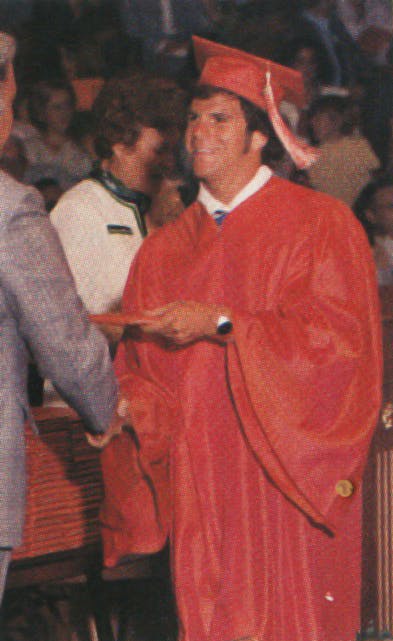
The twentyish college dropout was rolling in it, and he flashed it wherever possible. In 1986 Fertitta showed up to our ten-year high school reunion in a limousine. He acquired Rolexes, bought into the Houston Rockets as a limited partner, and threw a budget-busting soirée at his new Memorial-area mansion (in honor of football coach Jack Pardee), which featured a theater and, of course, a video arcade. The house was custom-built, courtesy of Fertitta Construction, the company he had founded in 1982. Like half of Houston, Fertitta was riding Boomtown’s real estate wave, poised to fall on his highly leveraged butt. Such was the arrogance of the era that when the market cratered and Fertitta found himself in a restaurant scribbling his debts on a linen napkin and running out of room after $10 million, he could manage a laugh and a ticket to Las Vegas. As Fertitta puts it, “My problems were big problems, not little problems. I still drove a Mercedes. I still lived well.”
Three crucial factors converged to deliver him from the tarpit of the eighties and place him in the blissful catbird seat he occupies today. The first was the stay of execution granted to all high rollers when nearly every major bank in Texas failed. Then, when some 25 creditors filed suit against him, Fertitta turned to a cousin’s law firm, Stumpf and Falgout, plucked from the ranks a deceptively soft-faced young attorney named Steven Scheinthal, and assigned him the task of keeping the wolves at bay. Employing the usual host of maneuvers that have endeared the legal profession to so many people, Scheinthal delayed, then denied, then delayed some more before at last negotiating settlements that amounted to a fraction of the original debts. Between the collapse of the Texas banking industry and the heroics of his attorney (who today is a vice president and the general counsel of Landry’s), Fertitta had bought time, and at a discount.
But to emerge free and clear, he needed cash flow. Fertitta had wisely hung on to his video games, but the Pac-Man craze was slowly going the way of the Hula Hoop and the pet rock. That business and a few other piddling revenue streams weren’t going to fill the multimillion-dollar hole Fertitta had dug. Teetering on despair, he considered giving it all up if a certain lender would let him hang on to $1 million. When the bank had the gall to impose fees that would cut into Fertitta’s remaining million, the kid reached for his cojones, said screw you, and went looking for an unsuspecting savior—who turned out to be Bill and Floyd Landry.
The Landry brothers, along with several running buddies from their hometown of Lafayette, Louisiana, had taken Houston by storm in the late seventies with authentic Cajun restaurants like Willie G’s, near the Galleria, and the first Landry’s, on the far west side of town. But by 1986 the partnership had become frayed by ill feelings, and nearly all of the partners wanted to sell out. An acquaintance of Bill Landry’s named Angelo Dispensa conveyed this information to his cousin, one Tilman Fertitta, who had worked briefly at a Landry’s establishment as a college student and knew what kind of business they did. Having just sold his interest in the ill-advised construction of Galveston’s Key Largo Hotel to his partner and cousin, Frank Fertitta, for$589,000, Fertitta had the $400,000 up-front cash he needed to buy out Bill Landry and most of his cohorts on December 31, 1986. Fertitta told the sole remaining partner, Denis Wilson, “I’m not a restaurant guy. You run the operations, and I’ll run the office.”
Their partnership proved to be one from hell. According to Wilson, the new president couldn’t resist intruding on the operations side and on one occasion came into the kitchen and threw a plate because it didn’t have enough butter on it. Fertitta counters that Wilson was a sullen presence who spent much of his time in the office ordering his secretary to bring him cups of coffee. Both concur, however, that near the end of 1987, Fertitta made sure that Wilson knew he intended to buy him out, no matter what it took. Wilson received $250,000 in cash up front, but it would cost him $120,000 in legal fees to collect most of the remaining $600,000. The debt-juggling continued, and Fertitta raced the clock like a man aflame.
In hindsight, he almost made it look easy. Despite pronouncements from food wags that Willie G’s would suffer without the Landry touch, Fertitta maintained an annual $4 million gross while trimming expenses. The cash flow from Willie G’s, combined with heavily discounted package loans from the Federal Deposit Insurance Corporation (FDIC), kept his head just above water. Meanwhile, his behind-the-scenes construction genius, Al Jaksa, demonstrated a proficiency at building new restaurants quickly and cheaply. Fertitta’s first two Landry’s expansions, both in Houston, suffered virtual crib death: One on Westheimer went bankrupt, and one on Shepherd he abandoned in the middle of the night. Hemmed in by a sudden proliferation of restaurants from the local Pappas chain, Fertitta turned away from the Bayou City: He opened locations on the Galveston Seawall, in downtown San Antonio, in Corpus Christi, and on the picturesque waterfront of Kemah, an overnight sensation that, he now acknowledges, “took us to a whole new level.”
Fertitta began to hit his stride as an operations man. Though today he terms himself a creator, the restaurants he fashioned are the product of a consolidator. He hung on to the names—suing Floyd and Bill Landry when they attempted to open restaurants featuring their last name or the name of their father, Willie G—but nothing else was sacred. He squeezed the Cajun spicing from the dishes (“Cajun food was a fad,” he says), scrubbed away the funky interior of Willie G’s, and starched the waitstaff’s appearance. At Kemah he introduced the first of his neon marquee signs, which bore a suspicious resemblance to the marquee of the Bookstop across the street from the ill-fated Landry’s on Shepherd. The Galveston and Kemah locations taught Fertitta that patrons liked to gaze out at the water while they ate their seafood, a gambit he applied to three of his next four expansions.
What a long, strange trip it was. Tilman Fertitta had blazed and swerved like a heat-seeking missile in a decadelong search for his pot of gold. And here it was, in a middlebrow market of consumers who wouldn’t be caught dead in a Red Lobster but would go gaga over studiously unspectacular seafood served in proximity to bodies of water—like Austin’s Town Lake—that hadn’t yielded an edible fish since the Bronze Age. Ah, but the system worked. In 1991 Fertitta paid a final visit to the FDIC office. He handed over a check for $2 million and was officially pronounced debt-free. What a country, he must have thought as he strolled out into the light—all zeroed out and nowhere to go but up. Now he could shed his eighties Teflon and dare to believe in a place called Hope.
Is it too late to mention that I like the guy? Forget, for a moment, the trail of tears somewhere back yonder. Texas was civilized by daredevils like Tilman Fertitta who put everything they had on the line and wouldn’t back down. “While people sit around and talk about doing something,” he likes to say, “I go out and do it.” This January he snatched up the entire Kemah waterfront, an enviable acquisition anyone else could’ve done—but didn’t. “I’ve been hearing Houstonians talk about doing a waterfront deal on Buffalo Bayou for the past thirty years,” Fertitta snickers. “I’m gonna have Kemah finished and looking great while they’re still talking about it.”
But here’s something else. Today Fertitta is a gracious winner, rehiring people he fired years ago, richly rewarding those who hung tough with him, contributing thousands to the University of Houston and the University of Texas Medical Branch’s breast-imaging program, and no longer given to tacky displays of prosperity. His eight-thousand-square-foot Memorial home is pleasant enough. He’s married now, to an attractive and unpretentious woman named Paige, and he says he’s determined not to spoil his two young sons (ages two and four), who have already flown all over America, though never once on a commercial plane.
Since Landry’s first public offering in 1992, the acquisitions of Joe’s Crab Shack in 1994 and the Crab House in 1996 have spread his empire to more than ninety properties in 28 states. Yet despite his feed-the-masses-not-the-classes proclamations, Fertitta has begun to show an interest in memorable dining, recently hiring respected Houston chef Kathy Ruiz to revamp his menus. In late 1995 he acquired from George Mitchell 22 acres of Galveston beachfront—including not only Mitchell’s San Luis Hotel but also the old Key Largo, which his cousin Frank had sold to Mitchell in 1987. Fertitta pumped millions into the sagging San Luis, added the finest landscaping touches the Seawall had seen in decades, and even opened up a first-class steakhouse at the San Luis, about which he declares, “I don’t give a s—t what it costs me. I want to serve the best meat there is.”
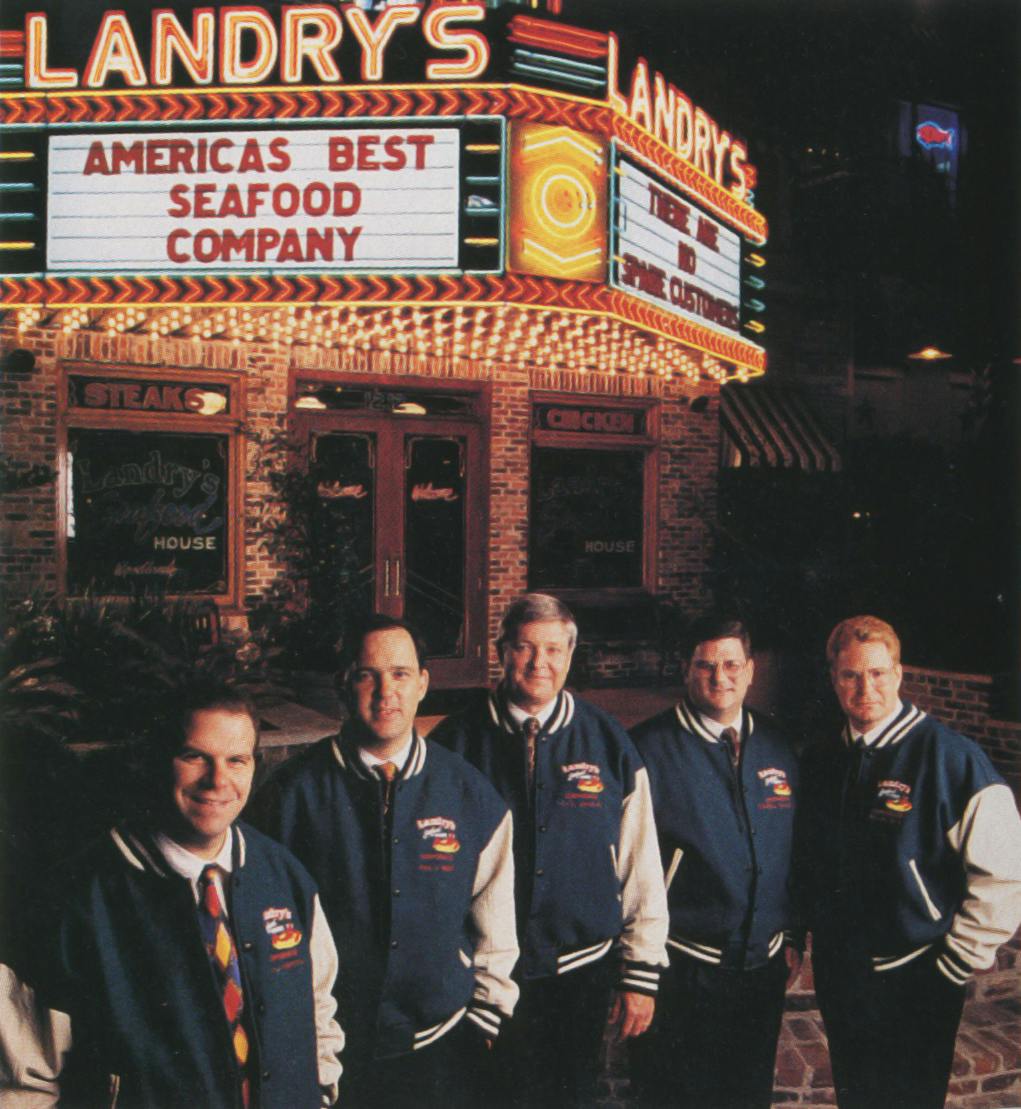
This is the Tilman Fertitta he always wanted to be. One of the good guys. Doesn’t smoke, seldom drinks, and is anti-drug to the point of randomly testing his 12,000 employees. Sees something of himself in Bill Clinton, who “was doing deals in the eighties just like the rest of us—I can’t sit and judge,” but who “really does care about poor people, black people, education.” During one of his private moments with Clinton, Fertitta broke from his industry and advised the president that an increase in the minimum wage wouldn’t lay waste small businesses, and anyway, it was the right thing to do.
It astounds him, then, to learn that so many people seem to think he’s so wrong, so nasty, such a jerk. Sure, his management style could be termed thumbs-on, and it’s true that at his Kemah and San Antonio locations he accused waiters of throwing out the silverware with the food scraps and dumped the garbage cans onto the kitchen floor to prove his point. But he made a point of tipping the busboys and dishwashers after they cleaned up the mess. And, yes, there he was at the San Luis, personally showing the bellhops how to hold the door open and greet the customer. “I’m a teacher,” he says, defending himself. “I’ll take you to a different level.” Or he’ll show you the door, as he did when he summarily fired seventy employees the day after he took over Mitchell’s hotel. But their jobs were expendable and that’s business, so why hold that against the boss?
And why hold it against Fertitta that, when he first moved a Landry’s into Kemah, he signed a lease that instructed the tenant not to open another seafood restaurant within a five-mile radius . . . and then, a few years later, opened a Joe’s Crab Shack right next door? Hey, the contract was ambiguously worded! Fertitta wasn’t the “tenant,” Landry’s was! And anyway, the landlord has been placated with a new contract, so why should anyone else complain? The same with Frans Gillebaard, who sold his three Kemah waterfront restaurants to Fertitta in January. He got in excess of $10 million on the deal. Why should he be offended that Fertitta had a squadron of two dozen employees, including general counsel Scheinthal, descend upon the properties at midnight the day of the closing to make sure that Gillebaard didn’t abscond with some of the furniture? That’s just good business. Instead of reviling Fertitta for living large in the eighties even as he was jacking around his creditors, why didn’t they thank him for adhering to the final settlement terms, unlike other fat cats he could name? Why not emulate him instead of trashing his name all over town, telling every loser on a barstool that Citizen Fertitta was nothing more than a nefarious mobster?
That was what the malcontents always fell back on. Fertitta, with his in-your-face, hot-blooded Italian disposition, had to be a wiseguy. Mob money got him in, mob money bailed him out, they would claim. After all, they’d say, wasn’t the arcade business controlled by the Mafia? Didn’t his Key Largo partner, cousin Frank, own three casinos in Vegas? And just what did Fertitta intend to do with all that property in Galveston and Kemah, if not make it a haven for gambling thugs? Because you knew, didn’t you, about his family . . .
“It’s the one thing that gets to him,” sighs his father, Vic. “Because my son is a control freak, and this is the one thing he can’t control.” How do you prove the negative? Dean Witter vetted his finances before green-lighting the public offering of Landry’s, and the Secret Service all but turned his underwear inside out before letting him host a fundraiser for Clinton last September. I’ve seen his architect’s blueprints for the Kemah development, and the closest thing to a casino that’s in the works is a Ferris wheel for kids. And for what it’s worth, his temperament and his last name aside, Tilman Fertitta is about as Italian as Hakeem Olajuwon.
But his great-great-uncles, Palermo emigrants Rose and Sam Maceo, are another matter. Every Galvestonian knows the legend of the Maceo brothers: local barbers who became bootleggers and then in 1926 opened up the Hollywood Dinner Club and later the Balinese Room—complete with air conditioning (a rarity in those days), glorious food, big-time entertainers like Fred Astaire and Guy Lombardo, and a fully loaded casino. Genteel Sam and whip-smart Rose brought a glamorous cachet to the Island, kept out the Chicago mob, discouraged the residents from gambling, donated to charities great and small, and propped up the town’s economy—which helps explain why many still view the wide-open era as Galveston’s moment of greatest glory.
Yet what the Maceos ran for thirty years was indisputably an organized-crime syndicate. The brothers’ slot machines were ubiquitous, and their homemade booze was distilled and bottled in a large Galveston warehouse. They could defy the law because the local lawmen were on their payroll—“Paid them off, every month, in cash,” according to 85-year-old Pete Salvato, a close ally of the Maceos who operated casinos in the Galveston County town of Dickinson. “They used the law to chase the competition out of town.” Judges and politicians were equally compromised. Additionally, the Maceos owned a number of legitimate local businesses—a fish house, a dairy, a trucking company, a concrete-mixing company—and applied their muscle to ensure that these industries as well remained under their control.
The Maceo era came to an end on June 19, 1957, when state attorney general Will Wilson filed civil action against the brothers and their lieutenants—including their nephews Victor and Anthony Fertitta. Six days later Tilman was born.
Fertitta was two when his great-uncle Anthony moved off to Las Vegas, three when his grandfather Victor died. In Houston, that tenuous connection was enough to make him a mafioso. But in Galveston, people took a different view of things. There, the Maceos and Fertittas were public-spirited, instinctively charitable gentlemen whose word was their bond. Not only were they not evildoers, they were everything a hero should be. Which was, in the view of many Islanders, everything a Moody was not.
A historian would be hard-pressed to find another Texas family that has given so much away only to be so hated. The Moodys have been a public relations disaster ever since Colonel Will Moody, Sr., evaluated the Great Storm of 1900 thusly to his son: “The fewer people on the Island, the better the hunting and fishing will be for us.” Unlike the Sealys, who provided the first big bequest for Galveston’s number one employer, the University of Texas Medical Branch; or the Kempners, whose generosity has always been discreet yet profound; or George Mitchell, whose revival of the Strand district was a magnificent labor of love; or for that matter the Maceos—unlike the other Galveston scions, the Colonel’s tribe has always seemed to give begrudgingly, even bitterly, and with the expectation of a payback.
Colonel Moody’s great-grandchildren may be the most roundly despised generation yet. Most notably, Shearn Moody, Jr., was carted off to prison in the late eighties for receiving kickbacks from recipients of questionable Moody Foundation grants (and was pronounced the sleaziest man in Texas on the cover of this magazine). Shearn is now dead, leaving his brother Bobby to bear the town’s scorn. He’s an easy target, being almost Garbo-esque in his elusiveness—the better, he says, to avoid the attention of tax assessors and kidnappers. Instead, Moody leaves it up to his lieutenants, attorney Buddy Herz and brother-in-law Doug McLeod, to browbeat local politicians and the media into giving Moody whatever they say he wants. The Galveston County Daily News has shown considerable fortitude in speaking its mind, but city officials have continually indulged Moody’s wishes—because, as one frustrated ex-official observes, “By and large, a person isn’t going to speak up against the people who provide. So the Moodys have pretty much had their way.”
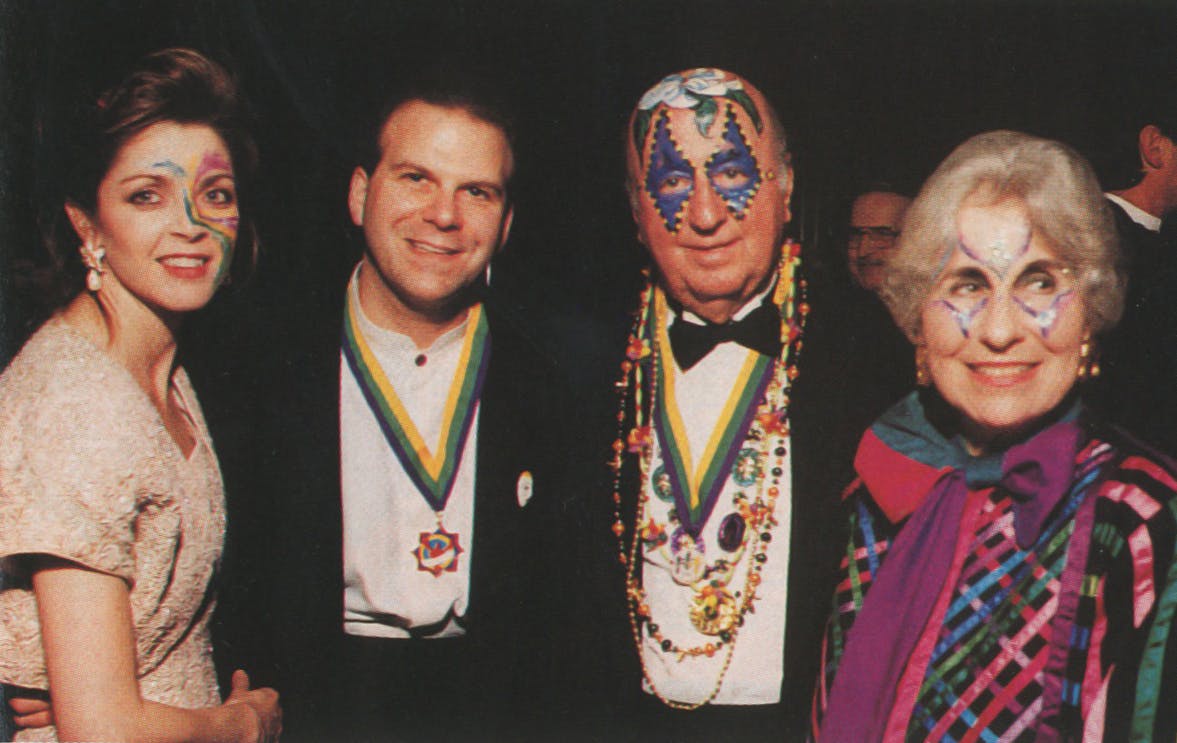
But has that way always come at the expense of Galveston? “At the Moody Foundation, we can give anywhere in the state we want,” Bobby Moody reminded me one afternoon over lunch. “But over the last thirty years, we have committed maybe $380 million in Galveston.” He pulled out a clipping from that morning’s newspaper that discussed the imminent opening of a Texas A&M marine biology school in Galveston—made possible, he informed me, by a $1.75 million matching grant by the Moody Foundation. The Moodys started putting money into the Strand long before Mitchell got there, he pointed out. And then there was Moody Gardens, which was founded in 1983 to rehabilitate victims of head injuries, such as Bobby’s son Russ, but was now one of Galveston’s greatest tourist attractions, with a IMAX 3D theater, a rain forest, and soon a NASA space museum and an aquarium. But in the meantime, he reminded me, “The Moody Foundation is building a convention center at Moody Gardens at no cost to the city.”
“But this hotel you’re building next to the convention center,” I said, interrupting him. “Leaving aside its merits, isn’t Fertitta right that building a hotel that’s exempt from federal and ad valorem taxes, has no debt service, gets subsidized by the city, and can offer all those attractions at Moody Gardens for free—isn’t he right that it puts hotels like his at an unfair competitive disadvantage?” Moody dropped his fork softly, folded his hands, and crinkled his left eye in thought. Finally he said, “Well, I don’t think Mr. Fertitta is going to have to pay federal income tax either, because I don’t think he’ll generate a profit on his hotel investment in the first place.”
And that was all Bobby Moody had to say on that subject.
Fertitta didn’t come home to Galveston and invest $40 million to be treated like a chump. The guy who was responsible for Vice President Al Gore’s visit to the Island and ornamented the Seawall with his gleaming restaurants and his lavish San Luis redesign wasn’t going to let Bobby Moody make a mockery of him. When Fertitta learned, just months after buying the San Luis complex from Mitchell for $16 million, that the Moody Foundation would soon be breaking ground on the “nonprofit” hotel it had originally slated for construction in 2004, he informed the Moody camp of his intention to sue if the plans weren’t shelved. They weren’t, so he did. On November 14, six days after he filed suit, he railed against the Moodys at the chamber of commerce luncheon held on Moody property. Moody attorney Buddy Herz responded the next day by threatening to pull the family’s chamber memberships for permitting such an attack on hallowed grounds. The battle was joined.
Overnight, it seemed, Fertitta became a local hero. The Daily News’ letters page was crammed with missives by Islanders who saw the Maceo descendant as a giant-killer. Even before the lawsuit, editor-publisher Dolph Tillotson had devoted a special section to the Fertitta-Moody dispute; he recalls, “Buddy Herz argued the case that the Moodys had done wonderful things for Galveston and this would damage relations, so we shouldn’t do the stories.” Tillotson ran them anyway, siding with Fertitta’s concerns in an editorial. Later, George Mitchell expressed his support for Fertitta, creating what Herz publicly termed “an unholy alliance.”
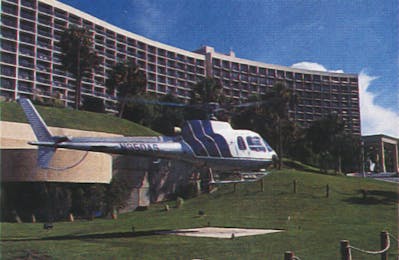
In the bars and shops of downtown Galveston, people who didn’t care much one way or the other about convention centers or hotels nonetheless saw what the controversy symbolized. The big old dog was getting bit, and the Islanders I talked to were loving it. No one, of course, was loving it as much as Tilman Fertitta. Letters were pouring into his office from folks he had never met. They saw him as a fresh voice, an agent for change, as his buddy Clinton would have it. Not that Fertitta wanted to become the little people’s standard-bearer on the Island. He had other fish to fry, as it were. “Every morning,” he would often tell me, “the Moodys get up, and this is what they think about all day long. And I think about it maybe twenty, thirty minutes a day.”
Still, it wasn’t a bad way to kill twenty minutes, sitting in the hero’s seat. Since the lawsuit had been filed, Moody, Mitchell, and Fertitta—the Big Three in current Galveston parlance—had been negotiating a compromise. At the end of one afternoon, Fertitta discussed the tentative settlement terms with me, lovingly ticking off each concession granted by the Moodys: offering equivalent discounts on attractions to all the other hotels, free transport from the other hotels to the new convention center, changing the name from Moody Gardens Convention Center to Galveston Island Convention Center, on and on, with more fine-tuning to be done.
“They fought us on everything,” he said, leaning back behind his desk. “I didn’t kick their ass, but I made them compromise for the first time in a hundred years. And these concessions are for everyone, not just me. All the other hotel operators who wouldn’t stand up—it’s for them too. Anyway,” he continued, “once the agreement is finalized, we will do the right thing and we will drop the lawsuit. But they know that this guy is gonna be watching everything they do.”
But even Fertitta didn’t seem to believe that. Spend the rest of his years monitoring Bobby Moody when he had so much left to do? He had the Kemah waterfront to develop, a pro sports franchise to acquire, maybe even a future in politics. For now, he had 12,000 employees to take to a different level and all those shareholders to appease. Fellow CEOs were enlisting his support on various legislative issues. Joe Kennedy’s people had talked him into hosting a party for the Boston congressman a couple of weeks back. On top of everything else, he’d promised Paige and his two sons a week at their home in the ski resort of Beaver Creek, Colorado, and it would be a miracle if he could sustain two hours on the slopes without a conference call. A guy could grow old doing the right thing.
“I’ll tell you the truth,” Tilman Fertitta sighed. “We had more fun in the eighties. We laughed a lot easier.” He managed a laugh, for nostalgia’s sake.

